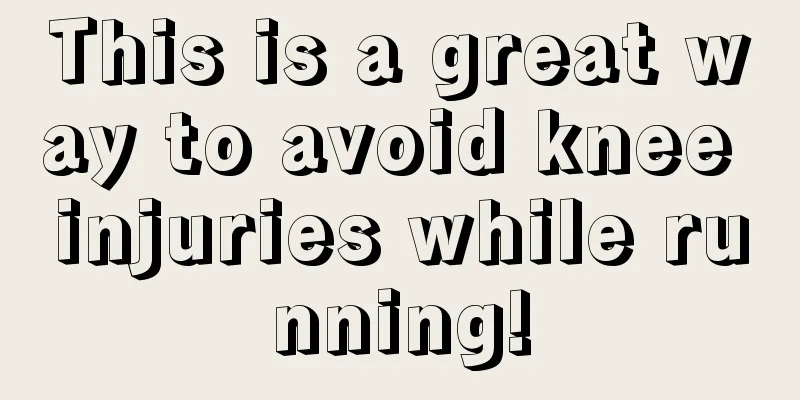What safety precautions should be taken when swimming in summer

|
Swimming has become more and more popular in recent years, especially in some areas with relatively hot weather in summer. Swimming makes people closer to water and gives people a sense of comfort. More importantly, it is an excellent way to cool off in the hot summer. However, there are also many safety accidents caused by swimming, so we still need to learn some safety precautions for swimming. 1. Key points for swimming safety 1. Don’t be too hungry or too full when going into the water. Don’t go into the water until one hour after a meal to avoid cramps; 2. Test the water temperature before entering the water. If the water is too cold, do not enter the water; 3. If you swim in a river, lake or sea, you must be accompanied by someone and cannot swim alone; 4. Observe the environment of the swimming area before entering the water. If there is a danger warning, you cannot swim there; 5. Do not swim in canyons where the geography is unclear. The water in these places varies in depth and is cold. There may be obstacles in the water that could cause harm, making it very unsafe. 6. Before diving, make sure the water is at least 3 meters deep and there are no weeds, rocks or other obstacles underwater. It is safer to enter the water feet first; 7. When swimming in the sea, swim parallel to the coastline. If you are not good at swimming or do not have enough physical strength, do not wade into deep water. Make a mark on the coast to keep an eye on whether you are being washed too far and adjust your direction in time to ensure safety. 2. Self-rescue strategies for drowning in summer swimming How to ensure the health and safety of swimming and avoid drowning incidents? If you are not familiar with the water conditions and rush into the water, it is very easy to put your life in danger. If you are unfortunate enough to encounter a drowning incident, experts say that the drowning person should not panic, but should remain calm and actively save themselves: (1) For those who have cramps in their hands and feet, if the cramps are in the fingers, you can make a fist and then open it forcefully, repeating this process several times until the cramps disappear. (2) If you have a cramp in your calf or toes, take a breath and float on your back. Use the hand on the opposite side of the cramped limb to hold the toes of the cramped limb and pull it towards your body. At the same time, use the palm of the hand on the same side to press on the knee of the cramped limb to help straighten the cramped leg. (3) If you have a thigh cramp, you can also solve it by stretching the cramped muscles. 3. First aid for drowning Drowning is a common accident. Drowning can cause suffocation and hypoxia. If accompanied by cardiac arrest, it is called "drowning". If the heart has not stopped, it is called "near drowning". This classification is of great significance for the condition and prognosis estimation, but the treatment principles are basically the same, so it is collectively called drowning. First aid methods 1. After lifting the injured person out of the water, immediately clear the water, mud and dirt in his mouth and nasal cavity, use gauze (handkerchief) to wrap your fingers to pull the injured person's tongue out of the mouth, unbutton his clothes and collar to keep his airway open, then hold the injured person's waist and abdomen, with his back facing up and his head hanging down, and pour water out. Or pick up the injured person's legs, place his abdomen on the first aider's shoulders, and run quickly to drain the accumulated water. Or the first aider can take a half-kneeling position, place the injured person's abdomen on his legs, let his head hang down, and press his back flat with his hands to pour water. 2. If someone stops breathing, artificial respiration should be performed immediately, usually mouth-to-mouth breathing is the best. The first aider stands on one side of the injured person, holds up his jaw, pinches his nostrils, takes a deep breath, and then blows air slowly into his mouth. When his chest is slightly raised, he relaxes his nostrils and presses his chest with one hand to help him exhale. Repeat rhythmically (blow 16 to 20 times per minute) until breathing is restored. We must pay attention to safety. Don't think that you have good swimming skills or experience and ignore these safety issues. You should know that many safety accidents that occur every year are caused by people who claim to be good swimmers. Accidents are often caused by negligence, so it is better for everyone to be careful. After all, life is precious. |
<<: What should you pay attention to when swimming in the sea?
>>: How to practice yoga well?
Recommend
How to exercise abdominal muscles in the office
The abdominal muscles are a muscle group that mai...
What is Yu Zhuxuan's slim leg yoga like?
I believe that as people's understanding of y...
A disease can actually be caused by excessive exercise. How terrible!
Onychomycosis is a very common skin disease in li...
How to prevent muscle soreness the day after exercise?
Most people will not experience muscle pain when ...
Which muscles do narrow-grip push-ups train?
Narrow-grip push-ups are mainly used to exercise ...
Which is better for training arm muscles: arm strength machine or dumbbells?
Many of our friends like to exercise, especially ...
What are the exercises to slim down your thighs and buttocks?
Obesity is the natural enemy of many women. After...
Is it good to practice yoga every day?
Nowadays, many people, especially female friends,...
Improving intelligence does not rely on diet or supplements, but on exercise!
Research results show that neurons decline with a...
When is the time for morning exercise?
At five or six o'clock every morning, many pe...
Skinny Fitness Plan
Thin people are also very common in life. Thin pe...
What are the benefits of aerobic kickboxing?
The aerobic kickboxing exercises are very simple ...
Horse stance fitness training method
Horse stance is a basic skill that many people wo...
Biceps training method
The biceps brachii is located on the front of the...
Can swimming help you lose weight?
It seems like I can hear people around me clamori...









